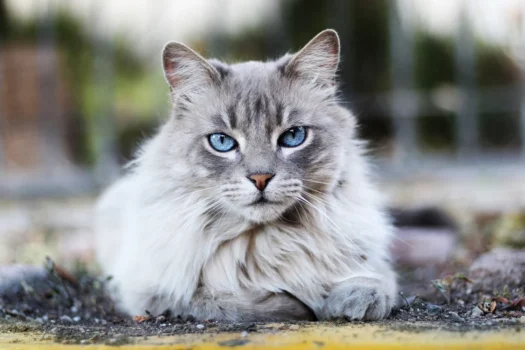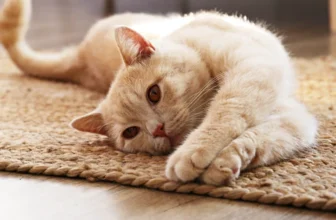As cat owners, we want nothing more than for our furry friends to be happy and healthy. Unfortunately, just like humans, cats can develop a variety of health issues, including feline arthritis. Understanding and managing this condition can be challenging, but with the right knowledge and care, you can help your American Shorthair cat live a comfortable life. In this article, we’ll explore the ins and outs of feline arthritis, including its symptoms, causes, diagnosis, and treatment options. We’ll also provide tips for managing the condition at home and preventing it from developing in the first place. Let’s dive in and learn how to keep our feline companions healthy and happy!
What is Feline Arthritis?
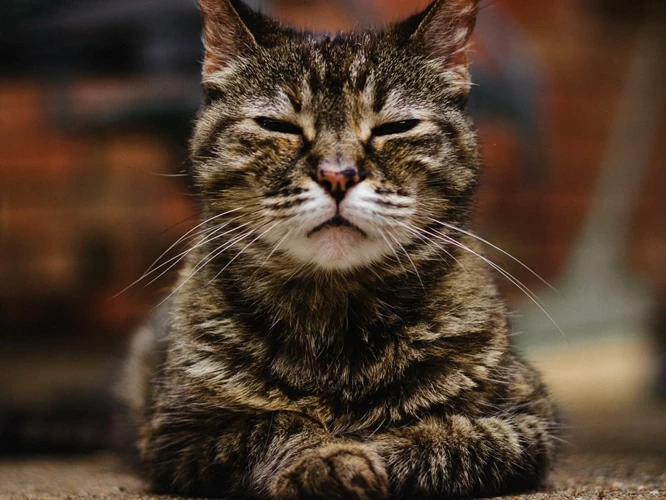
Feline arthritis is a condition that affects many American Shorthair Cats. It is a painful joint disease that can make it difficult for them to move around comfortably. Arthritis occurs when the protective cartilage between the bones wears down over time, leading to inflammation and pain in the affected joints. While this condition can be common among aging cats, it can also occur in cats of all ages due to a variety of underlying factors. In this article, we will discuss the symptoms, causes, diagnosis, treatment, and prevention of feline arthritis in American Shorthair Cats. Understanding this condition and how to manage it can help improve your cat’s quality of life and keep them healthy.
Symptoms of Feline Arthritis
Feline arthritis is a degenerative disease that affects the joints of cats. The symptoms of feline arthritis can sometimes be difficult to recognize, as they may be subtle and develop slowly over time. Some common symptoms of feline arthritis include:
- Lameness: One of the first signs of feline arthritis is lameness or limping, particularly after the cat has been resting or sleeping.
- Reduced mobility and activity: Due to the pain and discomfort associated with arthritis, cats may become less active and willing to play or climb as they used to do.
- Pain and discomfort: Cats may show signs of discomfort, such as not wanting to be petted or avoiding being touched on the affected area.
- Stiffness and reluctance to move: Cats with arthritis may have difficulty moving, and may appear to be stiff when they try to walk or climb.
- Licking or chewing the affected area: Cats may try to self-soothe by licking or chewing their joints, especially when they are in pain.
It is essential to identify these symptoms early, as early intervention and treatment can help prevent further damage to the cat’s joints. If you notice any of these symptoms in your shorthair cat, consult your veterinarian immediately to schedule a check-up.
NOTE: Regular wellness checkups for your shorthair cat can help you identify feline arthritis early and manage it effectively. Learn more about the importance of regular wellness checkups for cats by clicking here.
Causes of Feline Arthritis
Feline arthritis can be caused by a number of factors. In some cases, it may occur as a result of deterioration of the joints due to age or wear and tear. However, in other cases, there may be underlying conditions that contribute to the development of feline arthritis. The following table outlines some common causes of feline arthritis:
| Cause | Description |
|---|---|
| Injury or Trauma | A sudden injury or trauma, such as a fall or a car accident, can cause damage to the joints, leading to arthritis later in life. |
| Obesity | Carrying excess weight puts extra strain on the joints, leading to wear and tear that can contribute to the development of arthritis. |
| Genetics | Some breeds, including the American Shorthair, may be more predisposed to developing arthritis due to genetics. |
| Joint Abnormalities | Some cats may be born with joint abnormalities, such as hip dysplasia, that put them at an increased risk for developing arthritis. |
| Other Health Conditions | Certain health conditions, such as feline infectious diseases or allergies, can cause inflammation that can lead to arthritis later in life. |
It’s important to note that while these factors may increase the chances of developing feline arthritis, there is no one cause of the condition. Additionally, some cats may be more prone to developing arthritis regardless of their lifestyle or genetics. If you are concerned about your cat’s joint health, be sure to discuss with your veterinarian and consider regular check-ups.
Preventing obesity and maintaining a healthy weight through regular exercise can help reduce the risk of developing arthritis in American shorthair cats. For more information on preventing obesity in cats, check out our article Preventing Obesity in American Shorthair Cats: Tips and Strategies.
Diagnosing Feline Arthritis
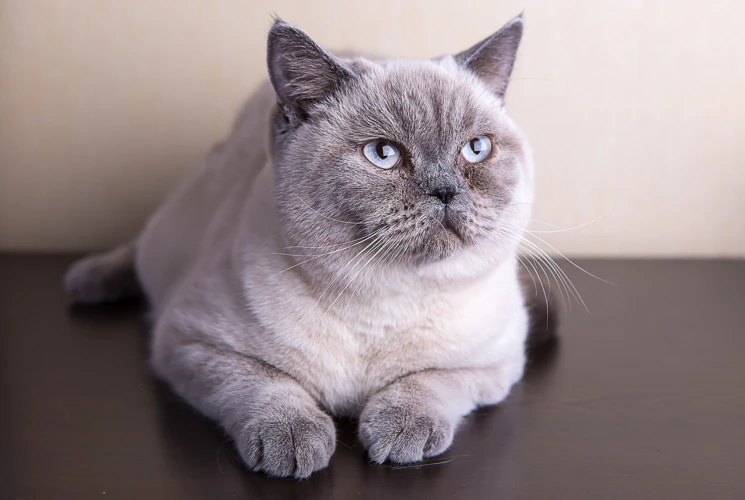
As a cat owner, it’s important to be aware of the signs and symptoms of feline arthritis. If you suspect that your American Shorthair cat is suffering from arthritis, it’s important to get a proper diagnosis from a veterinarian. The diagnostic process may involve a combination of physical examination, imaging, and joint fluid analysis. Let’s explore these methods in more detail to help you understand how feline arthritis is diagnosed and treated. To prevent common feline health issues, make sure to also check out our guide on feline infectious diseases and how to keep your cat healthy.
Physical Examination
During a physical examination, a veterinarian will look for specific signs that indicate the presence of feline arthritis. They will check for joint stiffness, swelling, and pain. They may also observe your cat’s gait, movement, and range of motion. Vets may apply gentle pressure to the joints to determine if there is any pain or discomfort.
It is important to note that cats are experts at hiding their pain, so symptoms of arthritis may not always be obvious during a physical exam. In some cases, blood tests or joint fluid analysis may be necessary to investigate further.
During a physical examination, veterinarians often pay attention to other physical cues such as changes in attitude or behavior, changes in coat quality, or muscle loss. These indicators can help the vet determine if there are additional underlying issues. They may ask about your cat’s typical daily behaviors and any changes you may have noticed recently.
If you noticed any changes in your American Shorthair Cat’s behavior or movements, make sure you record them for the veterinarian’s reference. With detailed information, vets can evaluate the overall health of your cat and determine the best course of treatment for relieving their arthritis symptoms.
For more information about managing other health issues in American Shorthair Cats, check out our articles on dental problems, spot’s dental problems, allergies, allergies in shorthair cats, asthma, asthmatic cats management tips, Urinary Tract Disease, Feline Lower Urinary Tract Disease, dehydration and, treating dehydration in shorthair cats, and managing hairballs in American Shorthair cats. Click here to read more on managing hairballs.
X-Rays and Imaging
Imaging techniques such as X-rays, ultrasound, or MRI scans can be useful in diagnosing feline arthritis. X-rays are particularly effective for detecting bone abnormalities and irregularities and are often the first choice of imaging for feline arthritis diagnosis.
During an X-ray, radiation is used to create images of the cat’s bones and joints. The images can show if there is erosion or abnormal bone growth, which are common signs of arthritis. X-rays can also provide information about the progression of the disease and help the vet evaluate its severity.
In order to get clear images, the cat may need to be sedated or held still during the X-ray procedure. The procedure is generally safe and a low-risk for the cat, with minimal exposure to radiation. However, it’s essential to follow the veterinarian’s instructions and recommendations.
If X-rays are not sufficient enough to diagnose arthritis, ultrasound or MRI scans can be used to provide more detailed images of the cat’s soft tissues and joints. Ultrasound uses sound waves to create images, while MRI scans use strong magnets and radio waves. These imaging techniques are particularly useful for detecting soft tissue damage, such as inflammation or swelling, and can provide insights into joint health.
Imaging techniques are crucial in diagnosing feline arthritis and determining the best course of treatment. The veterinarian will use the images to assess the extent of damage to the joints and bones and adjust the treatment plan accordingly.
Joint Fluid Analysis
One way to diagnose feline arthritis is through joint fluid analysis. This is a test where a sample of synovial fluid is taken directly from the affected joint and analyzed for any abnormalities. The synovial fluid provides important information about the health of the joint and can help determine the cause of the inflammation and pain.
The Joint Fluid Analysis procedure involves four main steps:
- Cleaning the Joint Area: The area around the joint is thoroughly cleaned with an antiseptic solution to minimize the risk of infection.
- Anesthetizing the Joint: A local anesthetic is given to minimize discomfort during the procedure. It also helps to relax the muscles and make it easier to obtain a clear sample of synovial fluid.
- Obtaining a Sample of Synovial Fluid: A needle is inserted into the joint and a small amount of synovial fluid is withdrawn. The needle may be repositioned a few times to obtain an adequate sample.
- Analyzing the Synovial Fluid: The synovial fluid is analyzed for a variety of characteristics, including its color, clarity, viscosity, and the presence of white blood cells, bacteria, or crystals. Based on these characteristics, a diagnosis can be made and a treatment plan can be formulated.
Joint fluid analysis is a valuable tool in diagnosing feline arthritis as well as other joint-related problems. It can provide important information about the cause of the pain and inflammation and help determine the best course of treatment for the affected cat.
Treatment for Feline Arthritis
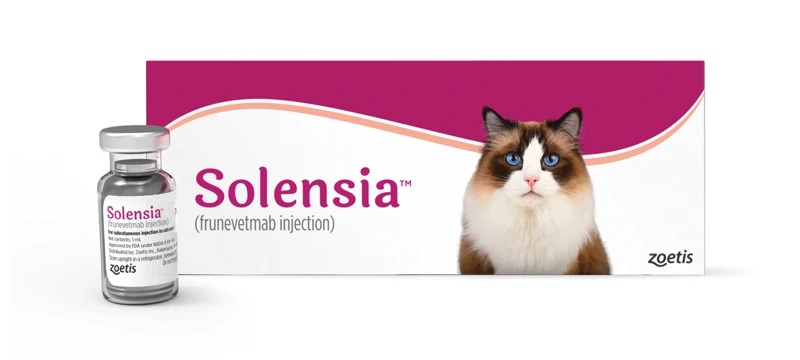
As much as we wish our feline friends never had to endure the pain and discomfort of arthritis, the truth is that it’s a common condition that affects many American Shorthair cats. The good news is that treatment options are available to help manage the symptoms and improve your cat’s overall quality of life. From medications to dietary changes, supplements, and lifestyle modifications, there are various ways to combat feline arthritis. Let’s take a closer look at the different treatment options available.
Medications
When it comes to managing feline arthritis, medications are often used to alleviate pain and reduce inflammation. Here are some common medications prescribed by veterinarians:
- Nonsteroidal anti-inflammatory drugs (NSAIDs): These are commonly used to manage pain and inflammation in cats. However, some NSAIDs can have side effects and may not be suitable for all cats. It is important to note that you should never give your cat over-the-counter human medications without consulting your veterinarian.
- Corticosteroids: These drugs can be effective in reducing inflammation and pain. However, long-term use can have side effects such as weight gain and diabetes. Corticosteroids should only be used as a short-term solution.
- Opioids: These are strong pain relievers that can be used to manage severe pain in cats. However, opioids can also have side effects and should only be used under the guidance of a veterinarian.
- Disease-modifying osteoarthritis drugs (DMOADs): These medications can slow down the progression of arthritis and may be used in conjunction with other pain management medications.
- Joint supplements: These are not technically medications, but they can be very helpful in managing arthritis in cats. Glucosamine and chondroitin are two common supplements that can help maintain joint health and reduce inflammation.
It is important to always consult with a veterinarian before giving your cat any medications. Dosages may vary depending on the individual cat, and some medications may not be suitable for cats with certain health conditions. Your veterinarian will be able to prescribe the best medication and dosage for your cat’s specific needs.
Dietary Changes
Feline arthritis can be managed with dietary changes that aid in reducing inflammation and maintaining healthy weight. Here are some dietary changes that can be incorporated into the cat’s diet:
- Omega-3 Fatty Acids: Adding omega-3 fatty acids to the cat’s food can help reduce inflammation in joints. Sources of omega-3 fatty acids include fish oils and flaxseed oil.
- Antioxidants: Foods that are high in antioxidants can help fight the oxidative damage that can lead to joint problems. Foods such as blueberries, spinach, and broccoli are good sources of antioxidants.
- Low-Calorie Food: If the cat is overweight, its joints will suffer due to excess strain. Switching to a low-calorie food will help the cat lose weight and reduce pressure on the joints.
- Glucosamine and Chondroitin: These supplements help to rebuild cartilage and reduce inflammation in joints. They can be added to the cat’s food in powder or liquid form.
- High-Quality Protein: Cats need to consume high-quality protein to maintain muscle mass and stay lean, which helps reduce the pressure on their joints. Look for foods that list real meat or fish as the first ingredient.
Remember to consult with a veterinarian before making any dietary changes, as individual cat needs may vary. Making these dietary changes in conjunction with medications and lifestyle changes can help manage feline arthritis and improve overall quality of life for your beloved American Shorthair cat.
Supplements
For cats with arthritis, supplements can be a helpful addition to their treatment plan. There are a variety of supplements available that claim to reduce joint pain and inflammation, including:
| Supplement | How It Helps |
|---|---|
| Glucosamine and chondroitin | These supplements work to improve the health of cartilage and reduce inflammation in the joints. |
| Omega-3 fatty acids | By reducing inflammation, omega-3s can help alleviate joint pain in cats with arthritis. |
| Methylsulfonylmethane (MSM) | This supplement may improve joint flexibility and reduce inflammation in cats with arthritis. |
| Green-lipped mussel extract | Studies have shown that this supplement can reduce joint pain and inflammation in both humans and animals. |
It’s important to note that while supplements can be beneficial, they should not replace any medications prescribed by a veterinarian. It’s also a good idea to consult with a veterinarian before giving your cat any supplements, as some can interact with other medications or have potential side effects.
Lifestyle Changes
Making certain lifestyle changes can be incredibly beneficial for managing feline arthritis. By including these changes in your cat’s routine, you can help alleviate some of the pain and discomfort they are experiencing.
Here are some lifestyle changes that you can make to help your cat:
- Provide a comfortable environment: Providing a comfortable environment is incredibly important for cats with arthritis. Make sure your cat has a warm, comfortable bed and easily accessible food and water. Consider purchasing a heated bed or a bed with memory foam to provide extra comfort
- Provide easy access to the litter box: It’s important to make sure your cat has easy access to their litter box. If your cat is struggling with mobility, consider purchasing a litter box with lower sides or a ramp to make it easier for them to get in and out
- Encourage gentle exercise: While it’s important to limit your cat’s high impact exercise, it’s still important for them to stay active. Encourage your cat to gently play with toys or consider incorporating short walks into their routine
- Provide a healthy, balanced diet: Helping your cat maintain a healthy weight is key for managing arthritis. Consider speaking with your vet for recommendations on a healthy, balanced diet for your cat.
- Minimize stress: Stress can exacerbate arthritis symptoms. Take measures to minimize stress in your cat’s environment, such as providing a quiet space for them to retreat to or using pheromones to help calm them
By making these lifestyle changes, you can help your cat feel more comfortable and manage their arthritis symptoms more effectively. Of course, it’s important to always consult with your veterinarian for the best treatment plan for your specific cat.
Managing Feline Arthritis at Home
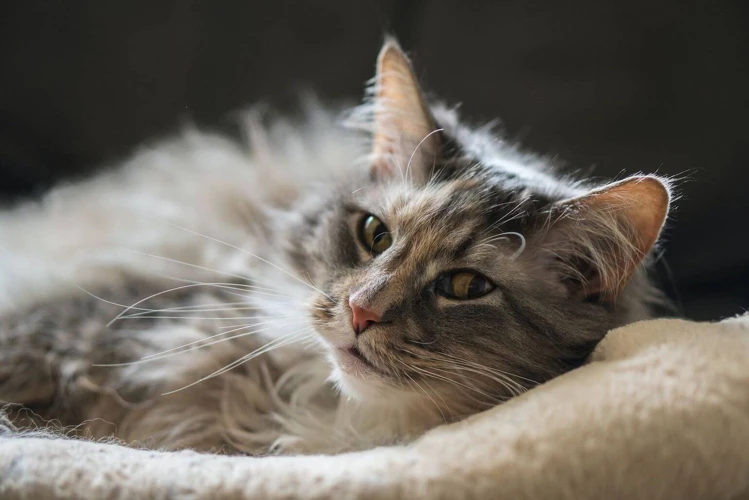
Helping your cat manage their arthritis at home is an important part of ensuring their comfort and mobility. When it comes to managing feline arthritis at home, there are several strategies you can implement to reduce pain, stiffness, and improve range of motion. With a combination of medical treatments and lifestyle changes, you can help your furry friend live a happy and healthy life. Let’s look at some of the ways you can help your cat manage their arthritis at home.
Exercise and Activity
Regular exercise and activity is crucial in managing feline arthritis in American Shorthair Cats. However, it is important to be mindful of the type and intensity of exercise your cat engages in. Here are some tips to help your cat stay active and healthy, while minimizing the risk of aggravating their arthritis symptoms:
- Low-Impact Exercises: Activities such as walking, gentle play or activity with toys that do not require sudden or jerky movements are great for cats with arthritis. Avoid high-impact activities such as jumping, running or playing with toys that require sudden movements.
- Shorter Play Sessions: Shorter and more frequent play sessions throughout the day can be less strenuous for arthritic cats. This can also help keep your cat entertained and mentally stimulated.
- Encourage Movement: Encourage your cat to climb and move around, as long as it is not painful or too strenuous. This can help keep their muscles and joints flexible.
- Provide Soft Surfaces: Provide your cat with soft surfaces to lie and sleep on, as well as ramps or steps to make it easier for them to get up and down from elevated surfaces.
- Consider Water Therapy: Some cats may benefit from water therapy, such as swimming or walking on an underwater treadmill. This can help increase their range of motion and overall mobility.
Remember to always consult with your veterinarian before starting an exercise routine for your cat with arthritis. They may recommend certain exercises or therapies based on your cat’s specific needs and condition. With the right care and attention, your American Shorthair can remain active and happy for many years to come.
Warmth and Comfort
Providing your American Shorthair cat with warmth and comfort is essential in managing feline arthritis. Here are some ways to ensure your furry friend stays cozy and comfortable:
- Create a comfy bed: A soft and comfortable bed can go a long way in providing warmth and comfort to your cat’s achy joints. Opt for a bed with memory foam or other supportive material to relieve pressure on your cat’s joints. Additionally, placing a heating pad or hot water bottle underneath the bed cover can provide additional warmth and comfort.
- Keep your home warm: Arthritic cats are sensitive to cold temperatures, so keeping your home warm can help them feel more comfortable. Consider adding extra blankets or providing a warm spot for them to relax, such as a sunny windowsill or a cozy cat condo near a heat source.
- Provide warm compresses: Applying warm compresses to your cat’s achy joints can help ease their discomfort and promote relaxation. You can use a warm towel or a heating pad wrapped in a towel to provide soothing heat to your cat’s joints. Be sure to check the temperature of the compress to prevent burning your cat’s skin.
- Comfortable clothing: If your cat is comfortable wearing clothing, consider purchasing or making a cozy sweater or jacket to provide added warmth and comfort. Make sure the clothing fits properly and does not restrict your cat’s movement or circulation.
By implementing these warmth and comfort strategies, you can help your American Shorthair cat manage their feline arthritis and provide them with the comfort and care they need.
Assistive Devices
Assistive devices can go a long way in helping cats manage their arthritis and lead a comfortable life. Here are some of the most common devices that you can consider for your American Shorthair cat:
- Ramps and Steps: As arthritis can make it difficult for cats to climb, jump, and descend, installing ramps and steps can make it easier for them to get to their favorite perch, bed, or litter box.
- Bolster Beds: These beds are designed to give extra support to the joints and spine, making it easier for cats to get up and lie down without putting too much pressure on the affected areas.
- Orthopedic Mats: Similar to bolster beds, orthopedic mats provide extra cushioning and support for your cat’s arthritic joints. These mats are made of memory foam or other materials that contour to your cat’s body shape.
- Non-Slip Mats and Pads: As cats with arthritis may have difficulty balancing and walking on slippery surfaces, placing non-slip mats and pads in their favorite spots can provide them with more traction.
- Special Litter Boxes: If your cat’s arthritis makes it difficult for them to climb over high litter box walls, consider getting a litter box with a low entry point or cut a section out of the box to make it easier for them to access.
Most of these assistive devices are readily available in pet stores or online. Keep in mind that while they can significantly improve your cat’s quality of life, they should be used in conjunction with other treatment options recommended by your veterinarian.
Alternative Therapies
Exploring Alternative Therapies for Feline Arthritis
While traditional treatments like medication and dietary changes can be effective, some cat owners prefer to explore alternative therapies for managing their cat’s arthritis symptoms. Here are some alternative therapies to consider:
| Treatment | Description |
|---|---|
| Acupuncture | This approach involves inserting fine needles into specific areas of your cat’s body to help reduce inflammation and pain. |
| Massage | Gentle massage techniques can increase circulation, relax muscles, and improve range of motion for arthritic cats. |
| Chiropractic Care | A chiropractor can adjust your cat’s spine and joints to improve mobility and reduce pain. |
| Cold Laser Therapy | This non-invasive treatment uses low-level laser to stimulate the body’s natural healing process and reduce inflammation and pain. |
| Herbal Remedies | Natural supplements like glucosamine and chondroitin can help reduce inflammation and promote joint health in arthritic cats. |
| Aromatherapy | Essential oils can have a calming effect on cats and promote relaxation and pain relief. |
It’s important to note that while these therapies can be beneficial, they should always be undertaken under the guidance of a licensed and trained professional. It’s also important to remember that what works for one cat may not work for another, so a multi-faceted approach involving traditional and alternative therapies may be the best course of action for managing feline arthritis.
Preventing Feline Arthritis
Keeping your American Shorthair cat healthy and happy is essential for their long-term well-being. As a responsible cat owner, it’s important to take preventative measures to keep your cat from developing feline arthritis. While there’s no guaranteed way to prevent arthritis, you can reduce the risk of your cat developing the condition. In this section, we’ll discuss some of the preventative steps you can take to ensure that your feline friend lives a happy and comfortable life free of arthritis.
Weight Management
Maintaining a healthy weight is essential for preventing and managing feline arthritis in American Shorthair cats. When a cat weighs too much, it puts excess pressure on their joints, leading to inflammation and pain. Losing weight can significantly decrease the stress on their joints, resulting in reduced pain and improved mobility.
Here are some tips for managing your cat’s weight:
- Consult with your veterinarian: Talk to your veterinarian about your cat’s ideal weight and how to achieve it. They will be able to provide you with a specific diet plan that takes into account your cat’s individual needs, age, and activity level.
- Monitor their food intake: Limit your cat’s calorie intake by feeding them smaller, more frequent meals throughout the day. Be sure to use a measuring cup to ensure you’re providing them with the correct portion size.
- Provide high-quality food: Feeding your cat high-quality, nutritious food is essential for their overall health and well-being. Avoid feeding them table scraps, as this can contribute to weight gain.
- Encourage exercise: Encouraging your cat to be more active can help them lose weight. Try playing with toys or providing them with a scratching post to encourage activity. Aim for at least 15 minutes of exercise per day.
- Consider weight loss supplements: Your veterinarian may recommend weight loss supplements to help your cat shed pounds. These supplements, when used in conjunction with diet and exercise, can help your cat lose weight safely and effectively.
By managing your American Shorthair cat’s weight through proper diet and exercise, you can significantly reduce their risk of developing arthritis and improve their overall quality of life.
Exercise and Activity
Exercise and activity are important for managing feline arthritis in American Shorthair cats. However, it is essential to provide exercise in moderation and ensure it is suitable for the cat’s condition. Providing too much exercise or the wrong type of exercise can exacerbate symptoms.
Low-impact Exercise
Low-impact exercises such as gentle walks or short play sessions can help increase a cat’s flexibility and strengthen their muscles. Playing with toys that encourage movement, such as balls or feather wands, can encourage exercise without placing too much strain on the joints.
Environmental Enrichment
Environmental enrichment can provide opportunities for cats to be more active without having to engage in formal exercise. This can include providing scratching posts, elevated platforms, and a variety of toys for the cat to play with.
Stretches
Gentle stretches can also help maintain flexibility and reduce stiffness in the joints. Encouraging your American Shorthair cat to stretch by gently moving their joints through their full range of motion can be helpful. This should be done slowly and carefully to avoid causing discomfort.
Water Therapy
Water therapy, such as swimming, can be a great low-impact exercise for cats with arthritis. It allows them to exercise in a weightless environment, reducing the stress on their joints. However, this should only be done under the supervision of a veterinarian or professional animal therapist.
It is important to monitor your American Shorthair cat during exercise and stop if they show signs of discomfort or pain. Gradually increase exercise levels over time, and always consult with your veterinarian before starting any new exercise routine.
Joint Supplements
One way to help prevent feline arthritis is to provide joint supplements to your cat. Joint supplements are designed to improve your cat’s joint health and reduce the risk of joint damage and degeneration.
Here are some popular joint supplements for cats:
- Glucosamine: Glucosamine is a natural supplement that helps to rebuild and repair damaged joints. It works by increasing the production of joint fluids and cartilage, which helps to reduce inflammation and stiffness in the joints.
- Chondroitin: Chondroitin is another natural supplement that works to rebuild and repair joint cartilage. It also helps to reduce inflammation in the joints and improve joint mobility.
- SAM-e: SAM-e is a natural supplement that has anti-inflammatory properties. It has been shown to be effective in reducing joint pain and inflammation in cats with arthritis.
- Fish oils: Fish oils are rich in omega-3 fatty acids, which have anti-inflammatory properties. They are often used to help reduce inflammation in the joints and improve joint mobility in cats with arthritis.
When choosing joint supplements for your cat, it is important to consult with a veterinarian to determine the best supplement and dosage for your cat’s specific needs. It is also important to choose high-quality supplements from reputable manufacturers to ensure that your cat is receiving safe and effective products.
In addition to providing joint supplements, it is important to monitor your cat’s weight and provide regular exercise to help prevent the development of arthritis. Regular check-ups with a veterinarian can also help to detect arthritis early and provide effective treatments to manage the condition.
Regular Check-Ups
Regular check-ups are essential to keep your American Shorthair cat healthy and prevent any potential health issues, including feline arthritis. During check-ups, your veterinarian will conduct a thorough examination of your cat’s joints and overall health, allowing for early detection and treatment of feline arthritis.
Schedule Regular Check-Ups: Make sure to schedule regular check-ups with your veterinarian at least once a year, or more frequently if your cat is older or has a history of joint issues.
Joint Examination: During the check-up, your veterinarian will examine your cat’s joints, checking for any signs of inflammation, swelling, or pain. They may also perform tests to check your cat’s range of motion and joint mobility.
Early Detection: By catching feline arthritis early on, treatment can be started sooner and potentially slow down or prevent the progression of the disease.
Diagnostic Tests: Your veterinarian may recommend additional tests, such as X-rays or joint fluid analysis, to confirm a diagnosis of feline arthritis and determine its severity.
Preventative Measures: In addition to regular check-ups, your veterinarian can offer advice on preventative measures to take to keep your cat healthy and reduce their risk of developing feline arthritis. These may include weight management, exercise, and joint supplements.
Stay Informed: Regular check-ups with your veterinarian also provide an opportunity for you to ask any questions and voice any concerns you may have about your cat’s health. Stay informed and involved in your cat’s healthcare to ensure they live a happy and healthy life.
Conclusion
In conclusion, managing feline arthritis in American Shorthair cats requires a multi-faceted approach that includes medication, dietary changes, supplements, lifestyle modifications, and at-home care. It’s important to identify the symptoms of feline arthritis and seek veterinary care as soon as possible. Early diagnosis and treatment can greatly improve your cat’s quality of life.
Regular check-ups, weight management, exercise and activity, and joint supplements can also help prevent feline arthritis from developing or worsening. It’s crucial to work closely with your veterinarian to develop a plan that is tailored to your cat’s individual needs and health status.
Additionally, providing warmth and comfort, assistive devices, and alternative therapies may also enhance your cat’s comfort levels. Remember to always consult with your vet before implementing any new treatments or changes to your cat’s care routine.
Ultimately, by taking a proactive approach to feline arthritis management, American Shorthair cats can continue to enjoy a happy and active life, free from the discomfort and limitations associated with this condition. Don’t hesitate to reach out to your veterinarian for further guidance and support as you navigate this journey with your furry companion.
Frequently Asked Questions
Can Feline Arthritis be cured?
Feline Arthritis can’t be cured, but it can be managed with treatment and lifestyle changes.
Is Feline Arthritis common in American Shorthair Cats?
Yes, it is relatively common in all types of cats, including American Shorthairs.
What causes Feline Arthritis?
Feline Arthritis can be caused by a variety of factors including injury, obesity, genetics, and normal wear and tear.
Can Feline Arthritis be prevented?
Feline Arthritis can be prevented or minimized by maintaining a healthy weight, regular exercise and activity, and joint supplements.
What are the symptoms of Feline Arthritis?
The symptoms of Feline Arthritis include limping, stiffness, reluctance to jump, and decreased activity and mobility.
How is Feline Arthritis diagnosed?
Feline Arthritis is usually diagnosed through physical examination, X-rays and imaging, or joint fluid analysis.
Can Feline Arthritis be treated without medications?
While medications are the most common treatment, dietary changes, supplements, and lifestyle changes can also be effective ways to manage Feline Arthritis.
What type of medications are used to treat Feline Arthritis?
Nonsteroidal anti-inflammatory drugs (NSAIDs) and corticosteroids are commonly used medications to treat Feline Arthritis.
How can I make my cat more comfortable if they have Feline Arthritis?
You can make your cat more comfortable by providing warmth and comfortable places to lie down, using assistive devices like ramps or steps, and incorporating alternative therapies like physical therapy or acupuncture.
How important is weight management for preventing or managing Feline Arthritis?
Weight management is crucial in preventing or managing Feline Arthritis, as excess weight and obesity puts added stress on the joints and can make symptoms worse.

